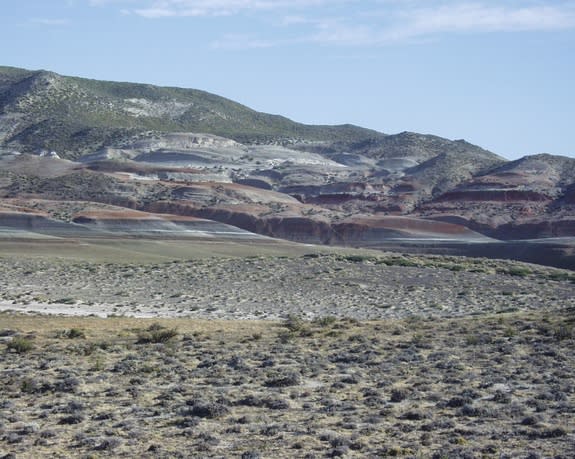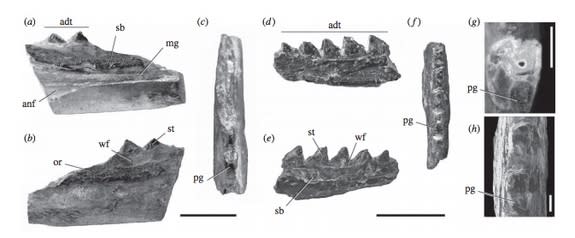Surprising Survivor: Little Ancient Reptile Outlived Dinosaurs
Fossils discovered in South America are evidence of true survivors: a new species of lizardlike reptiles that lived through the event that killed the dinosaurs.
Dubbed Kawasphenodon peligrensis, the newly identified specieslived between 66 million and 23 million years ago in what is now Patagonia. K. peligrensis was a rhynchocephalian, a group of reptiles that was quite diverse worldwide until the end of the Cretaceous Period. Today, only one member of this group, the fearsomely toothed tuatara (Sphenodon punctatus) survives. It lives only in New Zealand.
Researchers believed that all other rhynchocephalians died out 66 million years ago in South America, swept away along with the dinosaurs during the mass extinction at the end of the Cretaceous. The new fossils contradict that notion. [Wipe Out: History's Most Mysterious Extinctions]
"We thought that they became extinct, but well, here they are," said study researcher Sebastián Apesteguía, a paleontologist at Universidad Maimonides in Buenos Aires.
Surprise survivor
The fossils — two partial jawbones — were uncovered in Argentina's Chubut Province near a place called Punta Peligro. The name means "Point Danger," and for good reason. The beaches there run into sea cliffs and vanish during high tide.
"The access to the locality is several kilometers along the beach to reach the appropriate point," Apesteguía told Live Science. "So if you are late, the sea takes you."
The two jaws were found along with fossils from turtles, crocodiles and well-preserved mammals, Apesteguía said. Each jawbone belonged to an animal that grew to be around 16 inches (40 centimeters) long. The species is in the same genus as another rhynchocephalian from the Cretaceous Period, before the mass extinction, Apesteguía said, revealing continuity in the lineage despite the extinction event. Other animals found at the site, including mammals and turtles, appear to have survived the mass extinction as well, he said.
"We are beginning to understand that perhaps the late Cretaceous extinction was not that hard in South America, or in the Southern Hemisphere, as it was in the Northern Hemisphere," Apesteguía said.
Life and death
Why the Southern Hemisphere might have been less hard-hit remains a mystery, as does much of the daily life of K. peligrensis. Rhynchocephalians came in a variety of shapes and sizes, with some species growing as large as 5 feet (1.5 meters) long,Apesteguía said. The newfound species lived in a littoral, or shoreline environment. Researchers aren't even sure if it was aquatic living or a land-dweller, nor do they know what it ate. Various rhynchocephalian species were herbivores, omnivores or insectivores, Apesteguía said, and the new species has ambiguous teeth.
Despite its survivor status, K. peligrensis eventually died out in South America. Most likely, the extinction occurred about 33.9 million years ago, during the Eocene-Oligocene extinction event, Apesteguía said. At this time, climate cooled dramatically, affecting species across the globe.
The researchers reported their findings today (Aug.19) in the journal Proceedings of the Royal Society B.
Follow Stephanie Pappas on Twitterand Google+. Follow us @livescience, Facebook& Google+. Original article on Live Science.
Copyright 2014 LiveScience, a TechMediaNetwork company. All rights reserved. This material may not be published, broadcast, rewritten or redistributed.



